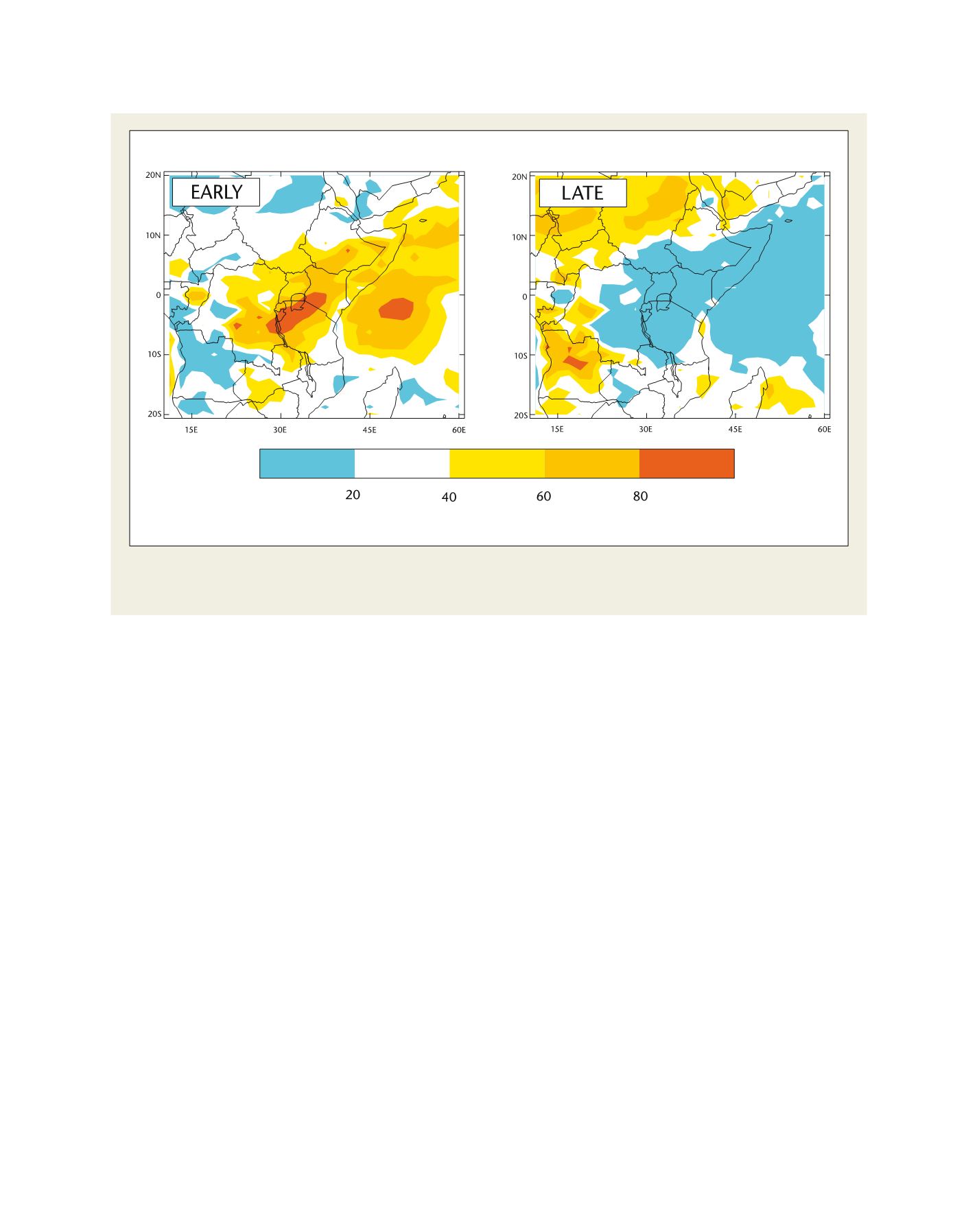

[
] 273
C
apacity
D
evelopment
Improving the application of science and climate models
for early warning systems and adaptation planning
The CSRP is developing new, experimental, real-time
climate forecasts for users in Africa. Products have
been designed to meet the needs expressed in the initial
consultation of user needs and are currently being
tested with African regional organisations and National
Meteorological Services. The timing of the onset of rains
is crucial to agricultural production and food security. If
planting is done too early, seeds rot in the ground; if too
late, the early growing season is missed. Experimental
seasonal forecasts of onset timing have been developed,
using the Met Office’s seasonal forecasting system, and
evaluated over past seasons. The performance is encour-
aging – in particular, good guidance for the early onset of
the 2011 short rains season over the Greater Horn of Africa
was achieved (above). The forecasts are currently being
trialled by climate organisations in west, east and southern
Africa and at Regional Climate Outlook Forums (above
right). These dynamical forecasts of onset are the first of
their kind and are additional tools to help African regional
centres and NMHSs improve their predictions of onset and
thereby increase agricultural output and food security.
A new monthly-to-decadal prediction system has been
developed based on the newHadGEM3 climate model and
has improved our abilities to predict multi-annual (next
five years) rainfall and temperature averages over Africa.
The key impact of this is enhanced potential to provide
Key results of the consultation were as follows:
• There was wide recognition of an urgent need to improve the
understanding and modelling of African climate in order to
provide reliable climate early warning systems and information
for adaptation
• Improvement of seasonal-range predictions (to six months ahead)
was seen as a higher priority than multi-annual to decadal-range
predictions, though the need for decadal-range information for
adaptation was seen as urgent
• There was a very strong signal that development of capability to
predict temporal distributions of rainfall (such as season onset,
duration and dry spell frequency) was the highest priority need.
The consultation also addressed training needs and possible ways
to respond. The results of both the research and training prioritiza-
tion exercises were then used to make adjustments to the project’s
science and training components.
CSRP outputs
Improved understanding and modelling of African climate and its drivers
The first output is advancing understanding of African climate proc-
esses in order to improve their representation in climate models.
Work is focusing on the new Met Office Hadley Centre climate model,
HadGEM3. Key results include improved representations of rainfall in
all important sub-Saharan rainy seasons, enhanced understanding of the
drivers of variability in theWest AfricanMonsoon and a comprehensive
assessment of the ability of present-day climate models to represent the
important influences of the global oceans on African rainfall.
Image: UK Met Office
Forecast probabilities for early (left) and late (right) onset of the 2011 short rains season over the Greater Horn of Africa. The predictions give a
substantially raised probability (>60%) of an early onset over much of the eastern side of the Greater Horn of Africa and early onset was observed to
occur (with definitions used here, early onset has a baseline chance of occurring of 33%).
















